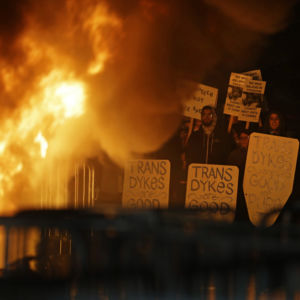Four Lessons I Learned on Managing Student Outrage from the Front Seat
The violence used to silence intellectual dissent at Middlebury College, a small, elite liberal arts college nestled in bucolic Vermont, has provoked a welcome round of introspection in the academy and other intellectual centers. The event also prompted me to wonder why similar violence didn’t erupt at my much larger urban university, Florida State, even though the speaker — professional political provocateur Milo Yiannopoulos — had provoked loud and sometimes violent outrage at other campuses.
A logistical snafu engaged me directly in the planning for the Yiannopoulos event as the faculty adviser for FSU College Republicans. The members were concerned that the university would use the snafu to cancel their event, even though 500 tickets had been distributed online before Yiannopoulos had even stepped onto campus. Indeed, college officials had several legitimate opportunities to cancel it. They didn’t. Instead, the university remained steadfastly committed to seeing Yiannopoulos speak on campus as a guest of the College Republicans.
I believe four elements of FSU’s approach to student engagement and protest helped achieve this civil outcome.
First, the university is committed to universal freedom of expression, regardless of political philosophy or partisan affiliation. FSU has a long history of student protest, even acquiring the nickname “Berkeley of the South” in the 1960s and 1970s. Thousands of students participate in more than 700 student organizations each year, including chapters of political organizations such as Students for a Democratic Society, College Democrats, College Libertarians and College Republicans. Allowing protesters to drown out other voices runs contrary to the university’s deep-seated culture and tradition.
Second, FSU has clearly established protocols that make student and public safety a core value. Students can protest, are even encouraged to protest, but they are not permitted disrupt. FSU police will not intervene unless protesters become unruly or otherwise prevent the event from continuing. Most likely, disruptive protesters would first be approached by an out-of-uniform officer in an attempt to de-escalate the situation before uniformed officers would be asked to remove them. Notably, protesters can display signs in the auditorium as long as they do not obstruct the sight of others.
Third, everyone was on the same page. The administration’s student-activities team worked seamlessly to coordinate logistics for the event, sitting down with student leaders to discuss protocols and expectations and to collect information, ensuring proper planning for managing entry into the auditorium. The security needs of the speaker, campus and students were coordinated.
Fourth, the university did not assume that violent protest was unique to one group or partisan viewpoint. Rather, officials from vice presidents down to student advisers assumed that protest was inevitable and had the potential to become ugly, and that their task was to manage the environment as best they could given the resources available. They established clear lines beyond which behavior would be considered unacceptable, triggering protocols that focused first on de-escalation.
The Yiannopoulos event unfolded in a civil climate at Florida State. Protesters arrived and were visible. Yiannopoulos performed his shtick, to the entertainment of many in the auditorium and embarrassment of others. Violent protests never unfolded.
Violence cannot always be predicted, and I am not privy to the details of Middlebury College’s preparations for the Charles Murray event. Nevertheless, given FSU’s policies, protocols and philosophy toward universal freedom of expression, coupled with public safety, official intervention may well have prevented the escalation of protest to the violent levels experienced at Middlebury (and other colleges).
Freedom of expression and personal safety are not mutually exclusive campus policy goals.

